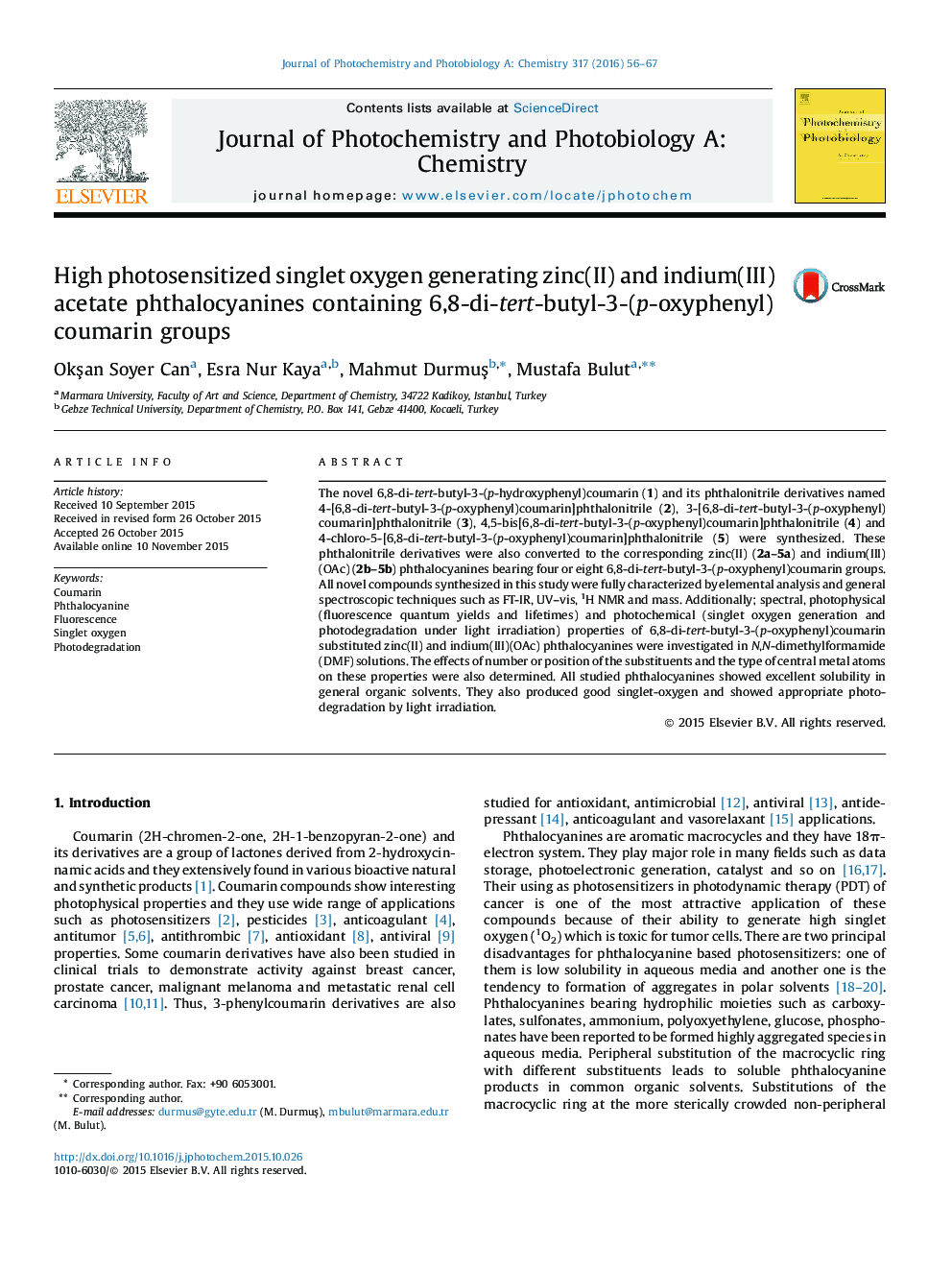| Article ID | Journal | Published Year | Pages | File Type |
|---|---|---|---|---|
| 26342 | Journal of Photochemistry and Photobiology A: Chemistry | 2016 | 12 Pages |
•Synthesis of 6,8-di-tert-butyl-3-(p-oxyphenyl)coumarin substituted phthalocyanines.•Study of photophysical and photochemical properties of these compounds.•Highly singlet oxygen generating photosensitizers.•The effects of number or position of the substituents and the type of central metals.
The novel 6,8-di-tert-butyl-3-(p-hydroxyphenyl)coumarin (1) and its phthalonitrile derivatives named 4-[6,8-di-tert-butyl-3-(p-oxyphenyl)coumarin]phthalonitrile (2), 3-[6,8-di-tert-butyl-3-(p-oxyphenyl)coumarin]phthalonitrile (3), 4,5-bis[6,8-di-tert-butyl-3-(p-oxyphenyl)coumarin]phthalonitrile (4) and 4-chloro-5-[6,8-di-tert-butyl-3-(p-oxyphenyl)coumarin]phthalonitrile (5) were synthesized. These phthalonitrile derivatives were also converted to the corresponding zinc(II) (2a–5a) and indium(III)(OAc) (2b–5b) phthalocyanines bearing four or eight 6,8-di-tert-butyl-3-(p-oxyphenyl)coumarin groups. All novel compounds synthesized in this study were fully characterized by elemental analysis and general spectroscopic techniques such as FT-IR, UV–vis, 1H NMR and mass. Additionally; spectral, photophysical (fluorescence quantum yields and lifetimes) and photochemical (singlet oxygen generation and photodegradation under light irradiation) properties of 6,8-di-tert-butyl-3-(p-oxyphenyl)coumarin substituted zinc(II) and indium(III)(OAc) phthalocyanines were investigated in N,N-dimethylformamide (DMF) solutions. The effects of number or position of the substituents and the type of central metal atoms on these properties were also determined. All studied phthalocyanines showed excellent solubility in general organic solvents. They also produced good singlet-oxygen and showed appropriate photodegradation by light irradiation.
Graphical abstractThe novel zinc(II) and indium(III) acetate phthalocyanine derivatives containing four or eight 6,8-di-tert-butyl-3-(p-oxyphenyl)coumarin groups were synthesized and characterized. The spectral, photophysical (fluorescence quantum yields and lifetimes), photochemical (singlet oxygen generation and photodegradation under light irradiation) properties of these phthalocyanines were investigated in DMF solutions. All studied phthalocyanines suggest as appropriate candidates for treatment of cancer by photodynamic therapy due to their high singlet oxygen generation ability.Figure optionsDownload full-size imageDownload as PowerPoint slide
